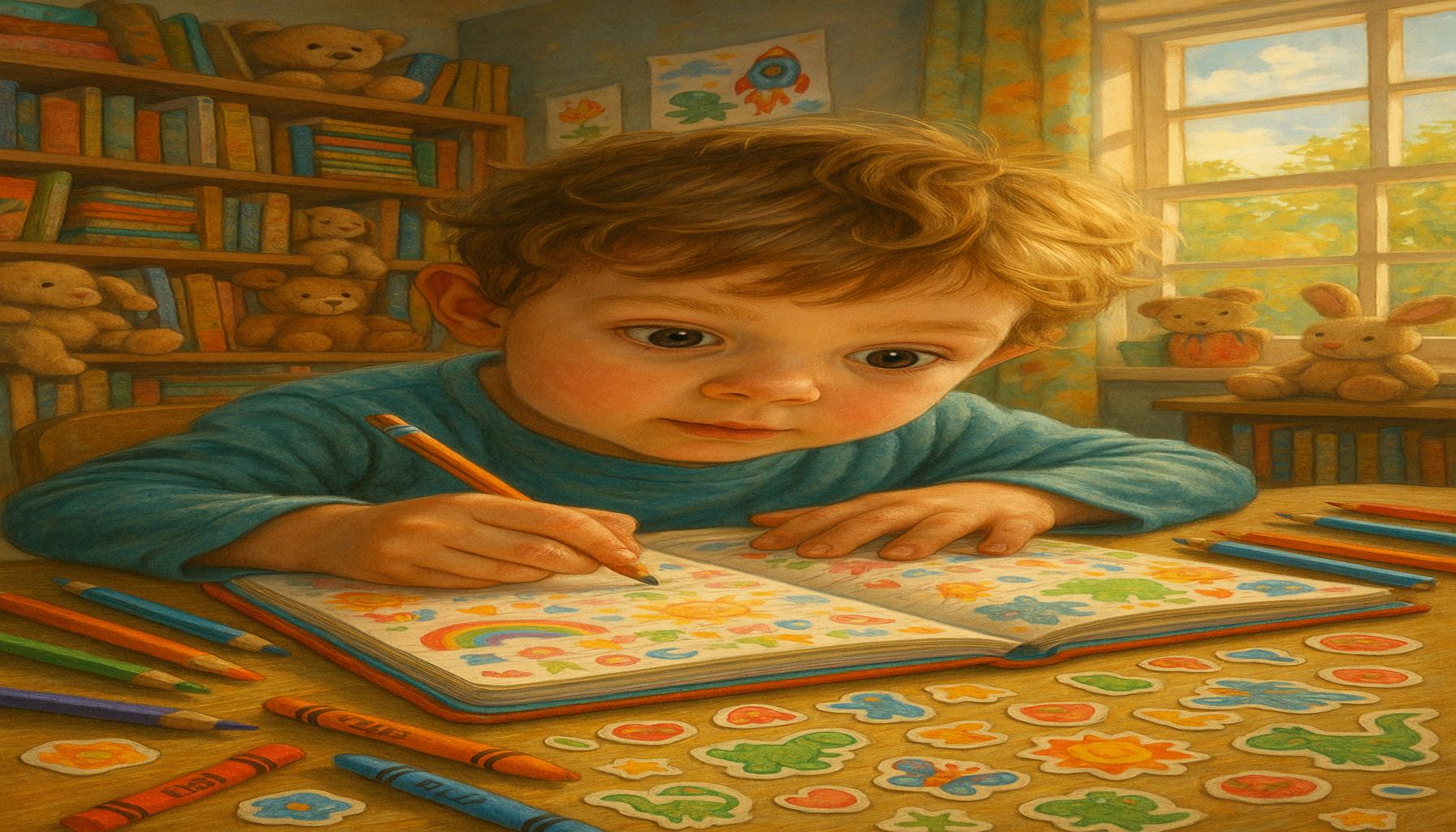Writing for Children: Creativity and Strategies to Engage Young Readers

The Importance of Writing for Children
Capturing the imagination of young readers is both an art and a science. When it comes to writing for children, creativity plays a pivotal role. However, effective strategies can enhance this creativity and ensure that stories resonate with their intended audience. Crafting stories that connect requires a nuanced understanding of children’s developmental stages, interests, and emotional needs.
To engage children’s minds, writers must consider:
- Age Appropriateness: Tailoring language and themes to suit different age groups is crucial. For instance, picture books for toddlers might use simple, repetitive sentences and colorful visuals, while middle-grade novels may embark on more complex themes, such as friendship, rivalry, and the journey of self-discovery.
- Relatable Characters: To forge a connection, characters must reflect the diverse experiences of young readers. For example, books featuring protagonists from various backgrounds, such as “Inside Out and Back Again” by Thanhha Lai, help children see themselves in literature while also exposing them to different cultures.
- Interactive Elements: Incorporating questions or prompts inspires engagement. Books like “Don’t Let the Pigeon Drive the Bus!” by Mo Willems invite children to actively participate in the story, enhancing their reading experience and critical thinking skills.
- Visual Appeal: Illustrations and vibrant descriptions stimulate the imagination. The combination of text and imagery in graphic novels or illustrated chapter books can captivate reluctant readers, as seen in series like “Dog Man” by Dav Pilkey.
Statistics reveal that children who read regularly develop better comprehension skills and creativity. According to the National Endowment for the Arts, engaging storytelling enhances a child’s ability to empathize and understand different perspectives. This development can manifest in improved social skills and emotional resilience, as storytelling invites children to navigate complex feelings and moral dilemmas through the lens of their favorite characters.
Additionally, exposure to diverse genres, from fairy tales to science fiction, encourages imagination and fosters a lifelong love for reading. The exploration of fantastical worlds allows children to dream big and think outside the box, essential skills for problem-solving in their future endeavors.
In this article, we will delve into the nuances of writing for children, highlighting techniques and approaches that inspire both budding authors and seasoned writers. By examining successful examples in children’s literature and offering practical tips, we aim to arm writers with the tools to create captivating narratives. Join us on this journey to discover innovative ways to engage young minds and foster a profound love for reading.

DIVE DEEPER: Click here to explore the art of street photography
Understanding the Mind of a Young Reader
When it comes to writing for children, understanding the cognitive and emotional landscape of young readers is essential. Each age group possesses unique qualities influencing how stories are perceived and understood. Writers must adapt their approaches to suit these varying developmental stages, ensuring that narratives remain accessible and compelling.
Research indicates distinct phases in a child’s reading development:
- Emergent Readers (Ages 0-5): At this stage, children are engaged through auditory experiences and visual stimuli. Picture books are paramount, using simple word structures and engaging illustrations to build vocabulary and comprehension. Interactive elements, such as lift-the-flap or sound buttons, can further enhance this sensory engagement.
- Early Readers (Ages 5-7): Children begin to decode text independently, making this a critical phase for introducing more text alongside imagery. Stories that incorporate repetition, rhyme, and rhythm help develop phonemic awareness. Series like “Elephant and Piggie” by Mo Willems exemplify this approach, allowing children to progress in reading while enjoying humorous narratives.
- Transitional Readers (Ages 7-9): At this level, readers are ready for more complex stories with richer plots. Chapter books, like “Magic Tree House” by Mary Pope Osborne, combine illustrations with text to keep the reader engaged. Themes such as adventure and friendship help to inspire a love for reading.
- Middle Grade Readers (Ages 9-12): This age group seeks stories that reflect their real-world experiences while incorporating elements of fantasy. Writers can delve into subjects like identity, resilience, and social issues, seen in works like “Wonder” by R.J. Palacio. The challenge lies in crafting relatable yet aspirational tales that encourage emotional intelligence.
By understanding these developmental phases, authors can tailor their content to better align with the cognitive abilities and interests of their young audience. Additionally, exposure to diverse genres—whether realistic fiction, fantasy, or non-fiction—encourages flexibility in thinking and creativity, thus enriching the child’s literary experience. A study published in the Journal of Research in Reading confirms that children who engage with various genres demonstrate improved interpretive skills and a broader perspective on the world around them.
Moreover, the integration of social and emotional learning (SEL) concepts into stories can significantly benefit young readers. Through well-crafted narratives that encompass themes of empathy, self-awareness, and relationship-building, authors can provide children with tools to navigate their own emotions. Books like “The Invisible Boy” by Trudy Ludwig highlight the importance of belonging and acceptance, allowing readers to explore complex feelings through relatable characters.
As we explore creativity and strategies to engage young readers, it becomes increasingly important to recognize not just the what of storytelling but the how. In the upcoming sections, we will discuss specific techniques that can ignite imagination, invite participation, and foster a lifelong love for literature among children. By combining artistic flair with strategic thinking, writers can create captivating stories that resonate with young minds for years to come.
| Engagement Techniques | Creative Elements |
|---|---|
| Interactive Storytelling | Use visuals and sounds to enhance the reading experience, stimulating a multi-sensory response. |
| Relatable Characters | Creating diverse characters invites children to connect and see themselves in various stories. |
| Incorporating Games | Games included in the narrative development can foster a playful environment that encourages learning while having fun. |
| Open-Ended Questions | Engaging children with thought-provoking questions can enhance critical thinking, allowing for deeper discussions and reflections. |
In ‘Writing for Children: Creativity and Strategies to Engage Young Readers’, the effective use of engagement techniques is essential to capture and retain the attention of young audiences. Implementing approaches such as interactive storytelling can transform a book into an immersive experience. Utilizing vivid visuals or sounds as part of the narrative can heighten engagement and create lasting memories. Furthermore, relatable characters who represent diverse backgrounds can encourage children to identify and empathize with different perspectives. Including game elements in storytelling not only enhances enjoyment but also facilitates learning through play. By asking open-ended questions, writers can stimulate creativity and critical thinking in young readers, prompting lively discussions and deeper understanding. Each of these strategies contributes uniquely to the multifaceted landscape of children’s literature, inviting readers to explore the limitless possibilities of their imaginations.
DIVE DEEPER: Click here for expert tips
Techniques to Spark Imagination and Foster Engagement
As writers embark on the journey of writing for children, adopting innovative techniques can significantly enhance storytelling, capturing young imaginations and maintaining their attention throughout the narrative. By blending creativity with strategic approaches, authors can craft experiences that not only entertain but also educate and inspire.
One effective strategy is utilizing interactive storytelling. This approach invites young readers to engage with the plot actively, often through choices that influence the outcome of the story. Books that allow readers to select different paths—such as the classic “Choose Your Own Adventure” series—provide a sense of agency, making reading an exciting exploration. This concept can also be transformed into digital formats, with apps and websites that incorporate gamified elements, allowing for innovative storytelling that resonates with tech-savvy kids.
Another avenue for creativity is the integration of visual storytelling. Since children are naturally drawn to illustrations, incorporating vivid and imaginative imagery can enhance the narrative. Collaborating with skilled illustrators can elevate a writer’s work, ensuring that the visuals not only complement but also enrich the text. Children’s books that feature strong visual elements, such as “Where the Wild Things Are” by Maurice Sendak, demonstrate how illustrations can evoke emotions and add depth to the story, fostering a multi-sensory reading experience.
Additionally, employing humor can be a pivotal way to captivate young audiences. Children often respond to playful language, silly scenarios, and light-hearted characters. Writers like David Shannon, with his popular “No, David!” series, utilize humor and relatable mischief to engage children effectively. By harnessing the power of laughter, authors can create an immediate connection with their audience, making reading a joyful experience that encourages children to return to the pages time and again.
In order to develop characters that resonate, writers should focus on relatable traits and experiences. Young readers are drawn to protagonists who reflect their own lives, struggles, and victories. Crafting characters who embody resilience, curiosity, and growth can inspire children to find themselves within the story. Books like “The Pigeon Finds a Hot Dog!” by Mo Willems demonstrate how relatable emotions—like the desire for companionship and friendship—can create powerful connections between characters and readers.
Transitioning from character to plot, employing episodic narratives can cater to the shorter attention spans often seen in younger readers. Rather than a continuous storyline, segmented stories with self-contained adventures allow readers to digest content more easily, as seen in chapter books and short stories like those found in “Young Reader’s Level” series. This allows children to engage with literature in bite-sized pieces, encouraging a sense of accomplishment with each completed episode.
To further deepen engagement, writers can utilize multicultural perspectives within their narratives. Weaving stories that reflect diverse backgrounds and traditions not only fosters inclusivity but also enables children to learn about different cultures, enhancing their understanding of the world. Works like “Last Stop on Market Street” by Matt de la Peña illustrate how beautifully nuanced stories can resonate with a wide audience, promoting empathy and curiosity in young readers.
As writers explore these creative techniques and strategies, they create vibrant landscapes for children’s literature that stimulate the mind and heart. The key lies in the balance of imagination and structure, ensuring that the stories are as enriching as they are entertaining. Through a thoughtful approach, authors can engage young readers in ways that foster lifelong enthusiasm for reading, opening doors to limitless possibilities in their imaginations.
DISCOVER MORE: Click here to dive into the evolution of digital photography
Conclusion
In the dynamic world of writing for children, weaving creativity into storytelling is essential for engaging young readers. The strategies highlighted throughout this article—from interactive storytelling to multicultural perspectives—demonstrate the myriad ways authors can captivate and inspire their audiences. By understanding the unique needs and preferences of children, writers can create stories that resonate deeply, fostering a lasting love for literature.
The integration of visual elements and humor, alongside relatable characters and episodic narratives, enables young readers to immerse themselves in the joy of reading. As they embark on these literary adventures, children not only find entertainment but also valuable lessons that shape their understanding of the world around them. By bridging imagination with strategic storytelling, authors can craft experiences that spark curiosity and instill a sense of wonder.
Ultimately, the goal of children’s literature should extend beyond mere entertainment. Through thoughtful and diverse narratives, writers can empower young minds, encouraging them to explore new ideas and perspectives. As we continue to support budding authors in this important field, let us remember that every story holds the potential to illuminate a child’s imagination, offering a gateway to endless possibilities. Embrace the art of writing for children, and be a part of nurturing the next generation of readers and dreamers.


